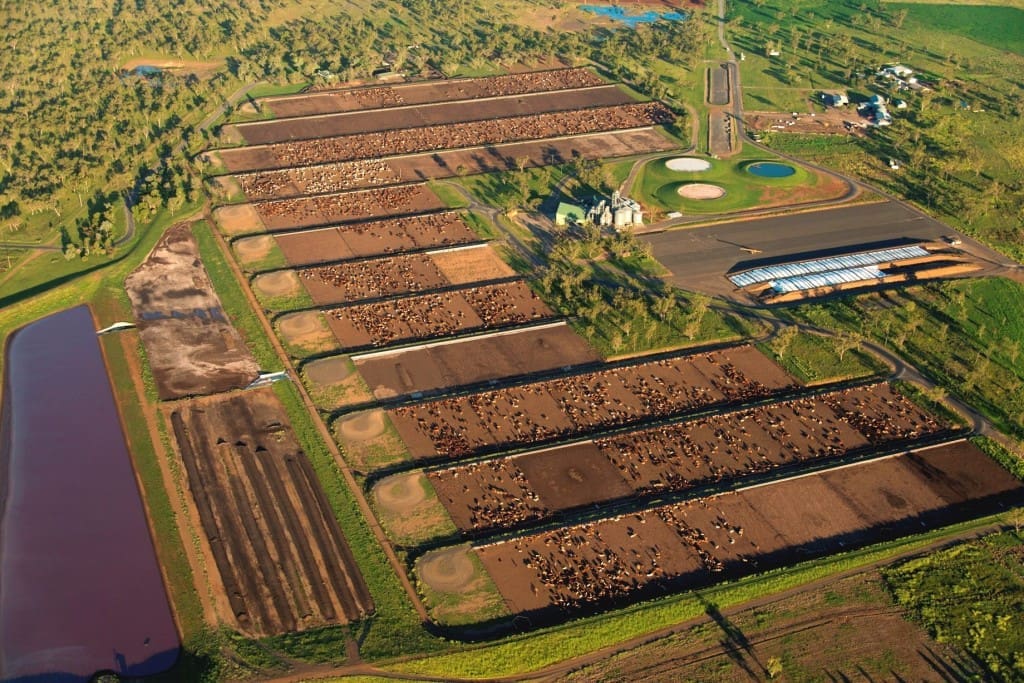AGRICULTURAL demand for water is increasing, and nowhere more so than in Queensland, where dry conditions are gripping a record 80 percent of the state – the largest area ever officially recognised as being in drought.
Waterfind Australia is a water market brokerage company that facilitates the buying and selling of both permanent and temporary water across the major irrigation regions in Australia. Recently, the company has expanded its services into the cattle-producing and farming areas of Queensland.
The company’s Queensland manager Jordan Barratt said a number of cattle enterprises, particularly those close to established irrigation schemes, had been showing interest in buying water entitlements and allocations. He said most of the current interest in use was for hay and silage production for the feedlot industry.
Mr Barratt said Waterfind had been working to secure additional water allocations with the North Australian Pastoral Co, which operates the 17,500 head Wainui feedlot at Bowenville, near Dalby; Elders’ 20,000 head Killara feedlot near Quirindi on northern New South Wales’ Liverpool Plains; and other feedlots owners along the Upper Condamine water supply scheme, located within the flood plains of the Darling Downs in southern Queensland.
That interest appears to have been driven squarely by the very high rates of lotfeeding activity across eastern Australia over the past two years. Numbers on feed nationally reached 960,000 head in the June quarter – close to historic highs. High rates of feedlot activity equals high silage and roughage use, equals greater need for irrigation water.
Meantime, in Queensland’s far north, Stanbroke Pastoral Co, one of Australia’s largest integrated beef companies, is developing a $200 million irrigation project near Normanton, in the Gulf of Carpentaria. Annually, the company will draw 150,000 megalitres from the Flinders River to irrigate 15,000 hectares of cotton on Glenore Station, south of Normanton.
Large-scale irrigation in Queensland’s gulf region was always part of the ‘grand plan’ for Stanbroke owner Peter Menegazzo, who died tragically in an aircraft accident in 2006. While his purchase of Stanbroke a year earlier was primarily a cattle play, his origins as a developer of large-scale irrigation projects near Swan Hill in Victoria fired his imagination to one day irrigate former grazing land in Queensland’s gulf region. That vision is now being executed by the next generation of Menegazzos – Brendan and Debra – current owners of Stanbroke.
CBRE director of agribusiness valuations, Peter Honnef said Stanbroke had the capital ability to build the required infrastructure, including channel works and holding tanks.
He said the provision of water could change the use of a property.
“Once you increase water use, you increase the value of a property. The sticking point for graziers is the large capital outlay required. To increase use you need money to invest in the underlying infrastructure, such as storage, channels and pumping.”
Mr Honnef said unfortunately, there were graziers who understood the value of water and its subsequent required development, but simply did not have the capital ability to make the investent.
Industry sources agree, claiming graziers who are in debt simply don’t have the money to invest. “If they can’t afford pumps, pipes or a pivot irrigator, then what is the point of giving graziers a water allocation?” one source asked.
Uncertainty over tenure is also proposed as another factor. “Who would invest in large-scale property development for irrigation when graziers are not assured that leasehold arrangements will persist after a mining lease has been perpetuated?” a source asked.
Despite these questions, there is little doubt that water access can heavily influence the value of a property.
Owners often under-estimate water value
Waterfind Australia’s Jordan Barratt said a water right, or entitlement, was no different to owning a piece of real estate.
“It’s an asset within itself,” he said.
“It can be traded just like any other commodity. What I have found is that people often don’t understand, or under-estimate the value of their water asset, especially when selling property.”
Mr Barratt used the Far North Queensland irrigation area of Mareeba as an example, because it has been one of the fastest growing water markets in Queensland.
“Eighteen months ago, water entitlements in Mareeba were trading at $600/megalitre. I’m not sure what the land price per hectare is, but today water is being traded there at $2500/megalitre, which is probably worth more than the land,” he said.
The same could be said about the Burdekin area in North Queensland, according to Mr Honnef. “The establishment of the Burdekin River Irrigation Area, fed from the Burdekin Dam, converted a grazing district with some delta farming on groundwater from $100 per hectare country into $20,000 per hectare irrigated farming country,” he said.
The respected rural land valuer said water was an opportunity for visionaries and pioneers. “Most graziers don’t pay for opportunities. But other people purchase a farm, develop the opportunities, and then sell them gain.”
Mr Honnef’s advice is straightforward: Where water is becoming available, graziers should grab it, because it will be of significant worth in the future.
“If you put water and soil together, someone’s going to come along with capital to develop it. And if you’ve got the opportunity, that’s your gain,” he said.

